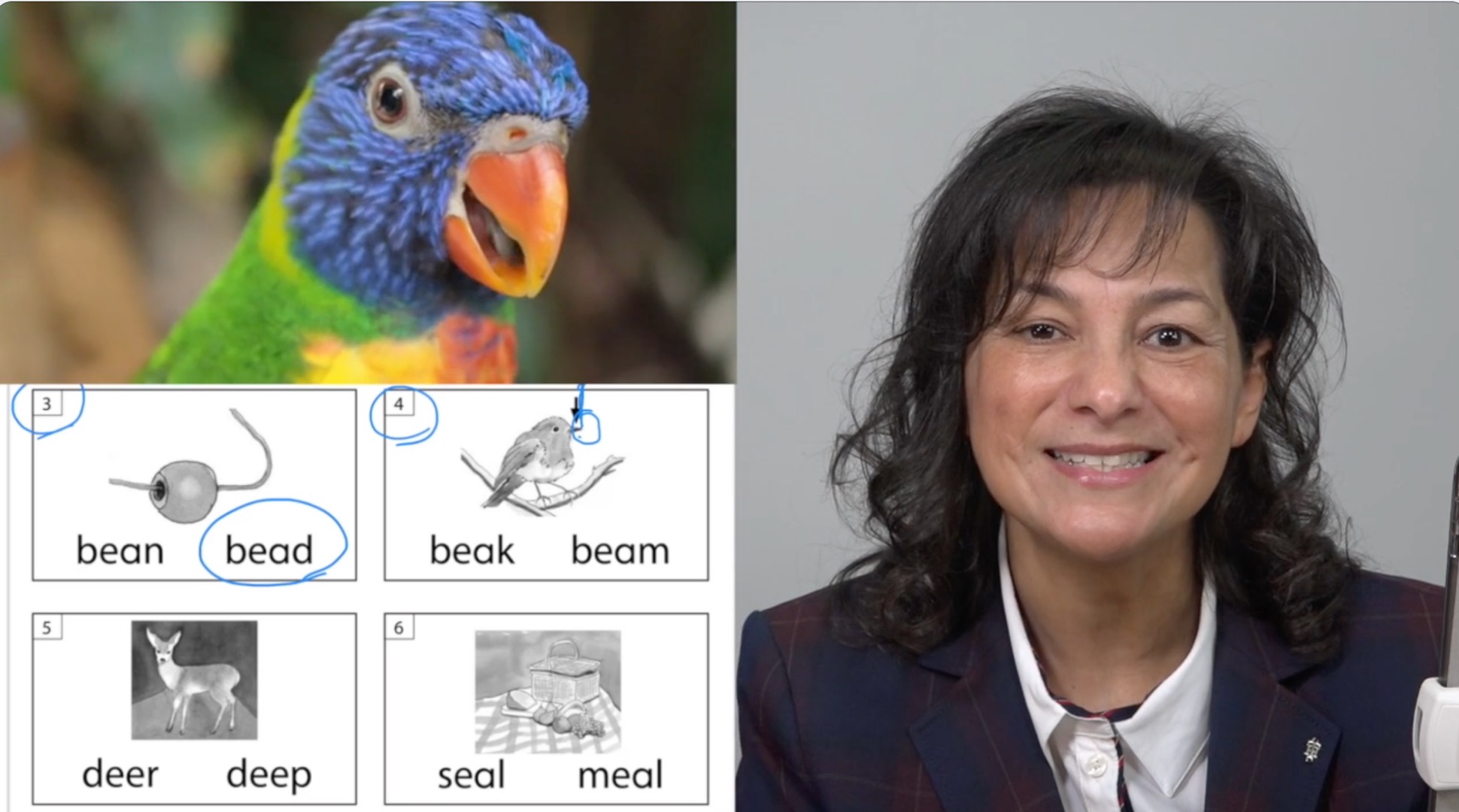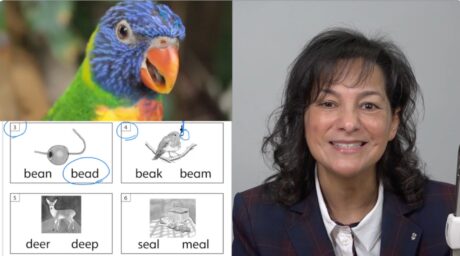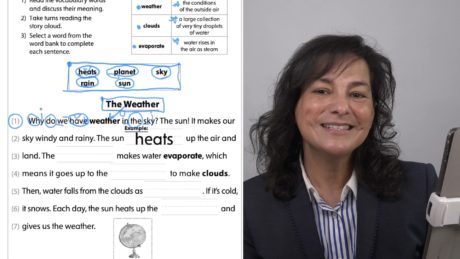The Long Vowels – Decoding Skills Course, Book 2, introduces students to a reading strategy designed to help them identify the vowel sound in words. Identifying vowel sounds is the most pressing challenge in the early stages of reading. This course focuses on teaching the decoding skills necessary to read words, phrases, and sentences.
The lessons begin with a review of the consonant sounds, which students practiced in Book 1. Next, students are guided through a step-by-step process to determine whether a letter in a word is a vowel or a consonant. This is an essential step for students to transition from identifying letters to reading words.
Now the fun begins! We will teach our students strategies that enable them to read a story at the conclusion of each section. We start by introducing the Reading Code, the first strategy to recognize the sound of the vowels. As students read long vowel words in each lesson, they also advance their knowledge of consonant sounds.
Throughout the workbook, students write long vowel accent marks before reading the words to provide a visual understanding of the vowel sound. Students learn that if the vowel is a long vowel, it says its name. Examples of words with long vowel sounds are kite, gate, and leaf.
The words in each lesson have been carefully chosen to allow students to practice their understanding of long vowel sounds in reading phrases, short stories, and various activities, such as Read and Draw and Identify the Drawing. With prompting and support, students will read words they have already practiced and decode new words in the context of sentences.
This course provides a video lesson for each page in the workbook. As the parent, you may participate with your child or request to schedule an online reading session with a Reading Pal, who will guide your child through the lesson.
Course Curriculum
| Page 2, Warm-up: Consonant Sounds – B2, 1.02.1 | 00:05:00 | ||
| (this video includes other students in a group setting) In this lesson, students will make an association between the name of a letter, the consonant sound the letter makes and the imaginary picture image of the letter in a fun systematic way. We have found this approach to be effective for students to practice and recall these key concepts in the foundation of learning to read. Important note: Some children pronounce consonants followed with an /uh/ sound. It is normal to make a consonant sound louder by adding an /uh/” sound. That /uh/ sound should be diminished. To address this potential habit, we use “helpful hints” to model the consonant sound of each letter and we ask students to be our echo for them to hear the sounds of the letters correctly. | |||
| Page 4 Circle the Letter, B2-1.01.2 | FREE | 00:10:00 | |
| In this lesson, students will demonstrate their ability to identify and recall the beginning consonant sound in words. Students will listen to a spoken word to make a connection between the spoken word and its beginning consonant sound. The ability to identify and recall the consonant sounds is essential for a student to blend sounds together to read words. At this level, it is common for students to confuse the b and d, to add a fun and visual image, we ask students to imagine that the tall part of the letter b looks like the tall back of a bear with its fur sticking straight up and the round part of the letter d looks like a short round dog’s head. We add a friendly smile to the letter d to emphasize it’s a short-round dog’s head. We have found this to be an effective approach to address the confusion students encounter with the consonant sounds in the letters b and d. | |||
| Page 17, Identify the Drawing, B2, 1.11.2 | 00:06:00 | ||
| In this lesson, students will make a connection between a printed word and a picture. The connection between the printed word and the picture develops the visual word bank and vocabulary. This lesson adds an element of fun for students to cut out the squares with the words and glue them to the matching picture. | |||
| Page 3, Review: The Reading Code – 2.01.1 | 00:04:00 | ||
| In this lesson, we address the most challenging part in learning to read English which is to identify the sounds made by the primary vowels in a word: A, E, I, O, U. The lessons on the vowels will use the standard diacritical marks: for long vowels the mark is called a macron. This term is far too difficult for young students to grasp and use effectively. We use the term accent mark to represent the long vowel symbol. The concept of a go-to reading strategy is emphasized throughout the Startup Reading program as the essential step in reading words. The go-to strategy for identifying a vowel sound in a word is called the reading code. In this lesson, students will practice the reading code. The reading code is a logical way to identify the sound of the vowel in a word and sets the foundation for students to become effective readers. | |||
| interim assessment (Decording Test) | 1 day, 6 hours | ||
| Page 29, Read and Draw: Long Vowel with a Final-e, 2.07.2, B2 | 00:05:00 | ||
| In this lesson, students will make a connection between a printed word and a picture. The connection between the printed word and the picture develops the visual word bank and vocabulary. This lesson adds an element of fun for students to cut out the squares with the words and glue them to the matching picture | |||
| Page 35, Say, Listen, and Circle: bee/bean- B2, 3.04.2 | 00:07:00 | ||
| In this lesson, students will continue to develop their understanding to identify and recall the consonant and vowel sounds in words. Students will listen to a spoken word to make a connection between spoken and printed words. The connection between the picture and the printed word develops the visual word bank and vocabulary. Each box has a pair of words that have been intentionally placed together for students to carefully contemplate which word has the correct consonant or vowel sound to match the picture. Students are especially engaged with visual and audio examples provided as they read the words to further develop their understanding of the words. | |||
| 5.06.1 Cut, Match, Glue! What vowel sound do you hear? – Page 66 | 00:18:00 | ||
| In this lesson, students will apply the reading code to read a word. As they are saying the word for a picture out loud, students will listen carefully to determine the long vowel sound they hear in the word. This lesson adds an element of fun for students to cut out the squares with the words and glue them next to the matching vowel sound. The lesson concludes by sharing a page that a reading friend completed to show how they glued the words to the matching vowel sounds to show they were a Super Reader! | |||
| Final assessment (Decording test) | 1 day, 6 hours | ||
Course Reviews
No Reviews found for this course.







